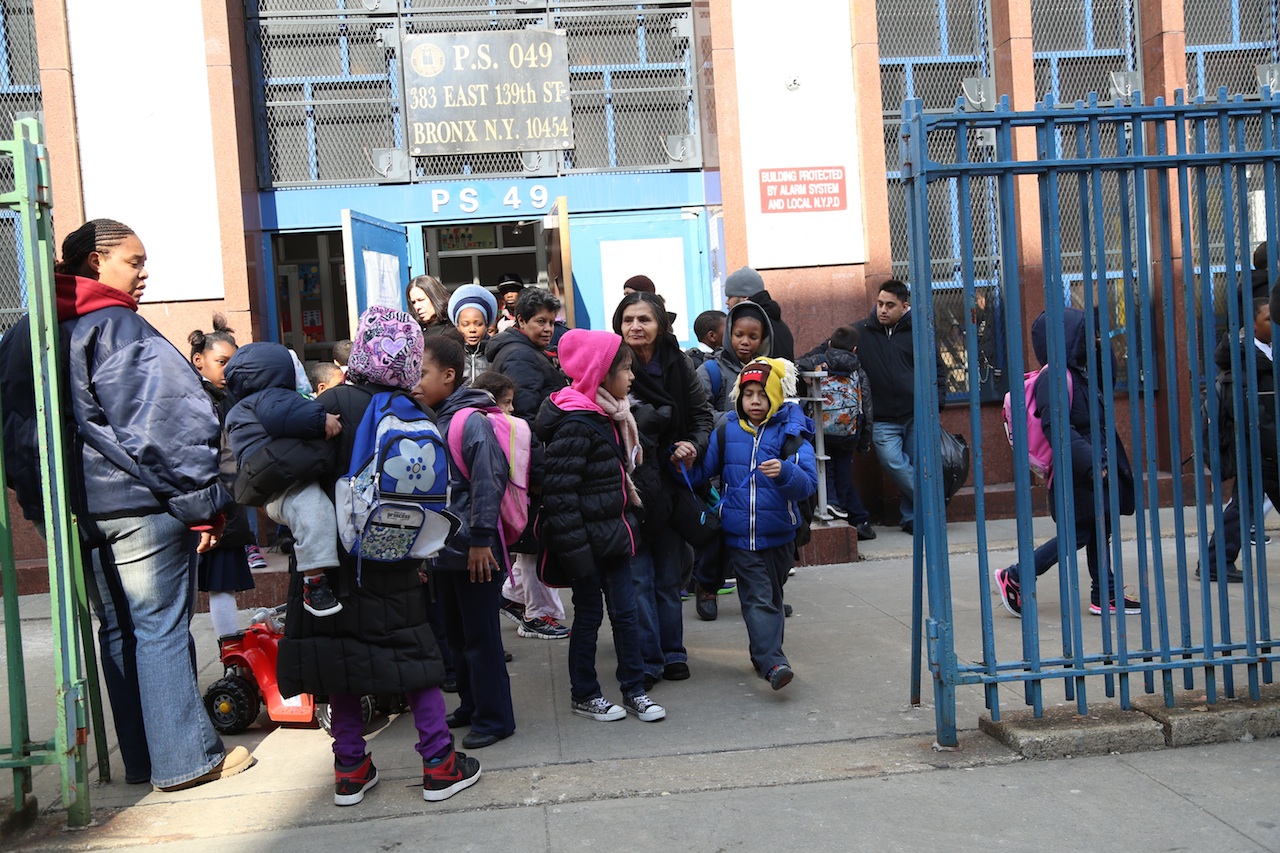
Mott Haven kids turned off by nutritious food
New York City school meals are a lot healthier now—the only problem is that kids in Mott Haven won’t eat them.
“If they haven’t had it at home, they aren’t going to be likely to try it at school,” said Kelly Moltzen, school wellness program coordinator for Bronx Health Reach, a coalition of community-based organizations, health care providers and social service agencies.
Kimari Santoni, a 7-year-old at P.S. 49 Willis Avenue School brings a ham and cheese sandwich and some juice because she doesn’t usually eat the school lunch, her mother Jesenia Garcia said.
“It’s healthy. It’s good for the kids,” Garcia said. “But she doesn’t like it. She’s not used to eating vegetables.”
The Office of School Food has revamped menus to include more vegetables, but in Mott Haven the changes don’t seem to be making the meals more popular: average daily participation in the school lunch program dropped from 15,866 in 2011 to 15,604 in 2012.
Bronx Health Reach is working to address what it says is a gap in education about healthy food through a number of initiatives including afterschool programs, nutritional presentations and lesson plans about food. Average daily participation in the school breakfast program in Mott Haven dropped from 8,048 in 2011 to 7,607 in 2012.
The group is working with schools to make parents and children more aware that school lunches are now healthier and better-tasting, Moltzen said. “They aren’t going to want to try it unless someone tells them about it,” she said.
Some parents said they’ve gotten the message but their kids haven’t. “They have better options now, but my sons don’t always eat it,” said Nelcy Luna who has two sons at P.S. 49, Osvaldo, 9 and Orlando, 10. “They mostly complain about the portions being too small. Usually if there’s something they like, they run out too quickly because there isn’t enough.”
Schools have moved away from centering their meals around chicken nuggets and frozen pizza. Over the last few years, lunch programs have been expanded to include roasted sweet potatoes, whole grain brown rice and other plant-based options, said Marge Feinberg, a spokeswoman for the Department of Education. Menus now include Kashi cereals, Stonyfield Organic yogurt and whole grain bread options. Lunch menus feature a daily “Eat Your Colors” vegetable choice that includes options such as roasted vegetables, broccoli as well as bean and chickpea recipes.
“Last year we introduced two new menu options to our portfolio,” Feinberg said. “We added a 100 percent vegetarian menu and an ‘alternative’ menu that incorporates items from our classic lunch menu and the vegetarian one.”
The alternative menu eliminates beef, pork, chicken fingers and mozzarella sticks.
“It offers lean based recipes and tofu recipes,” said Amie Hamlin, director of the Coalition of Healthy School Food. “It is less processed and has more vegetables.”
In the past, when school meals have improved, participation rates initially dropped but came back over time, Hamlin said.
“Anytime you change something, you might experience a drop,” Hamlin said. “Then kids get used to it and participation comes back. Students discover that the food is healthier, and it feels better when you eat it.”
The Coalition for Healthy School Food has created a curriculum in five classrooms every week in schools throughout the city. One of those is P.S. 132 in Morrisania
“We feel like teaching information about nutrition, media literacy and food politics is really important because a lot of times when they understand how the food industry might be tricking them, it might make them more interested in healthy foods,” Hamlin said.
The Coalition for Healthy School Food also gives nutritional presentations to parents.
“Parents always say, ‘How come we didn’t know this?’ after the parent presentations,” Hamlin said. “Education is important, and you can’t expect kids to eat something they are unfamiliar with.”
Emma Rodgers, program coordinator for Bronx Health Reach, said there are a number of reasons for the decline in participation.
“A lot of it has to do with parents and what students are eating at home,” Rodgers said. “In this area, there are a lot of immigrant communities that have different needs.”
The Office of School Food in the Department of Education has worked to incorporate halal meals and kosher options to accommodate those communities, Rodgers said.
Despite their efforts, parents say schools are dealing with some tough customers. Jesenia Garcia said that the food is not bad, but her daughter Kimari is just very picky.
“When she was a baby, I used to feed her peas and carrots and she used to spit it out. She still doesn’t like it,” Garcia said. “What she likes, they just aren’t going to give.”

